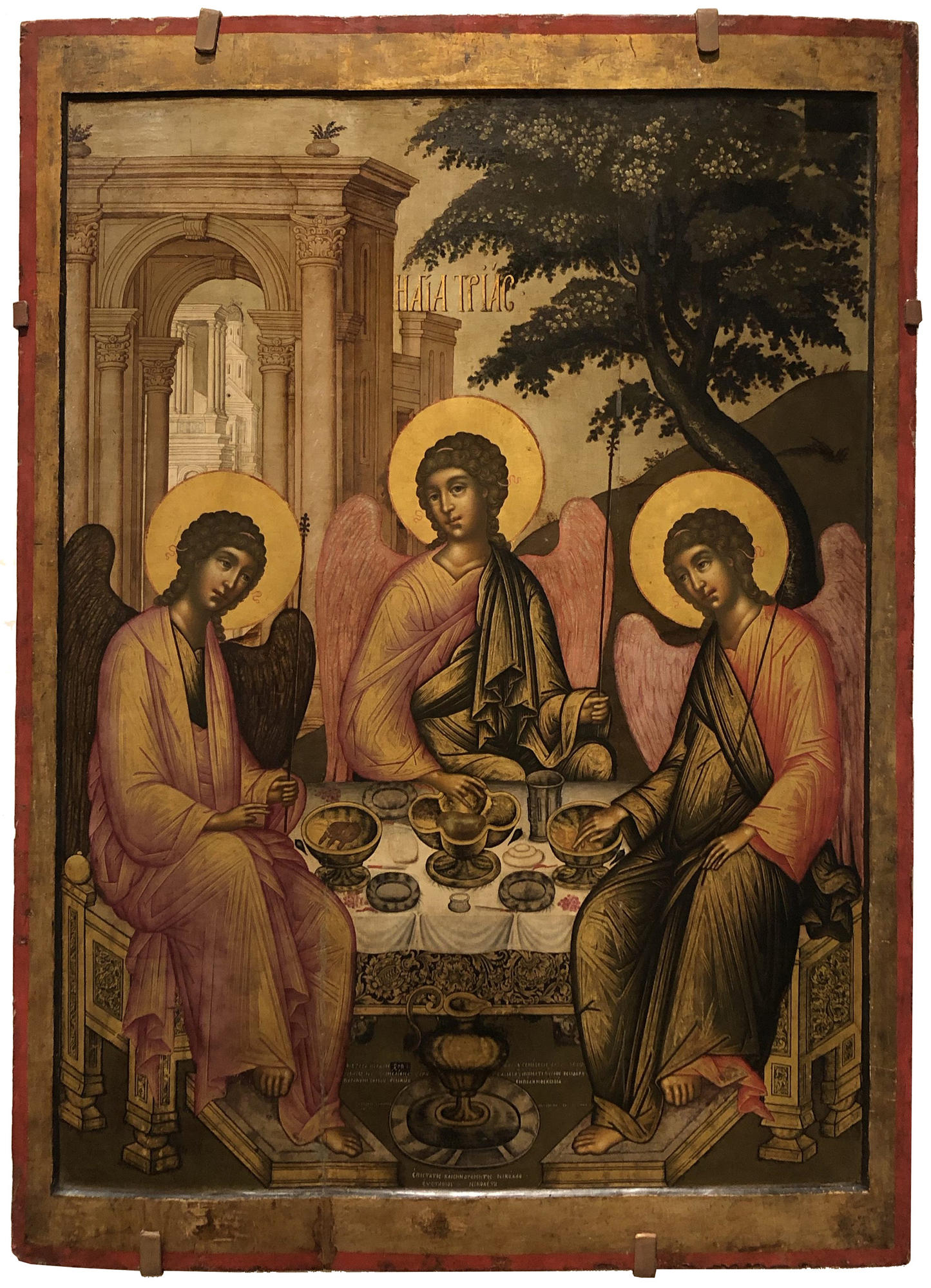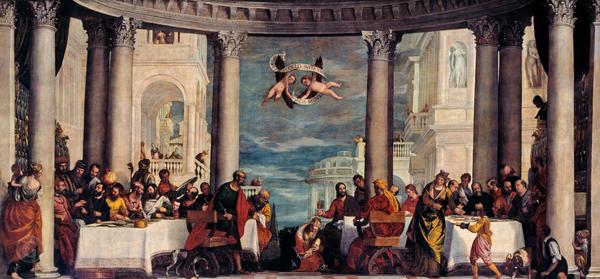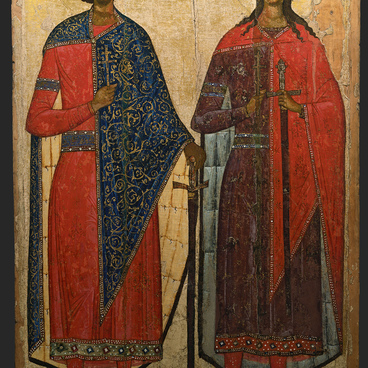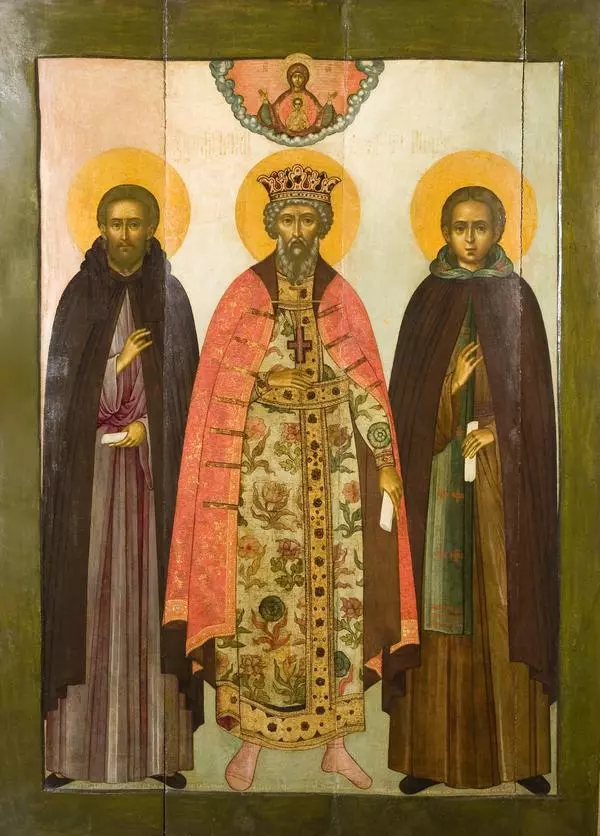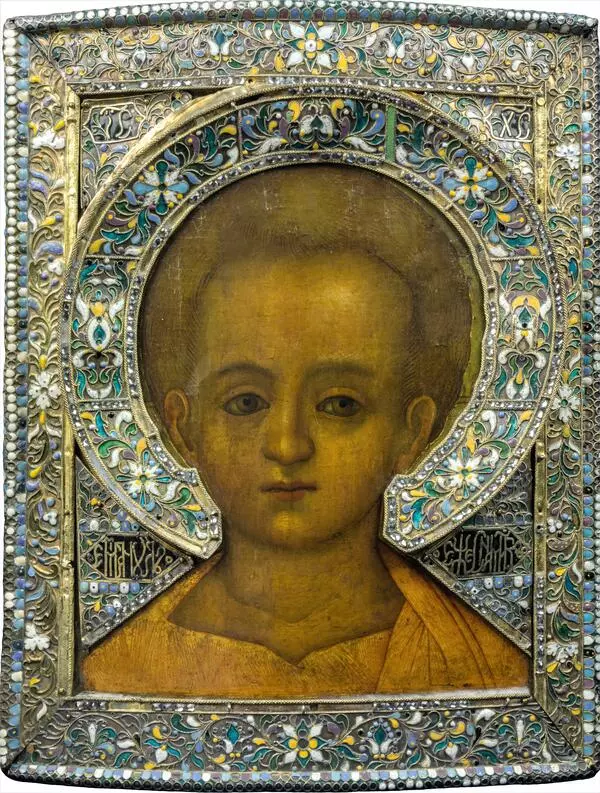Simon Ushakov was the leading artist of the Armoury of Moscow Kremlin in the second half of the 17th century. He directed a group of icon painters and painted on the walls of churches, decorated objects of art, made engravings, painted portraits and icons.
Old Testament Trinity
Время создания
1671
Размер
123x89,2 cm
Техника
Tempera on wood
Коллекция
43
Открыть в приложении#1

Simon Ushakov
Old Testament Trinity
#2
#3
In his Old Testament Trinity, Ushakov used techniques that were new for the art of the 17th century. He wanted to step aside from the canons of traditional icon painting. He was the first one of Russian icon painters who tried to imitate Western European paintings that were characterized by volume, single point perspective and realistic representation of objects and architecture.
The story from the Old Testament is about how God appeared to the 100-year-old Abraham in the likeness of three wanderers that were angels. Abraham and his wife Sarah welcomed the guests and they predicted to the couple the birth of a son, Isaac. The Trinity is one of the basic concepts of Christianity according to which God is one in three persons: the Father, the Son and the Holy Spirit.
#4
The artist based his work on The Trinity by the famous Russian icon painter Andrey Rublev. He placed the angels at the table in a similar way, fitting their figures into a circle. The creases on the wanderers’ clothes are almost the same as in Rublev’s icon. Like Rublev, Ushakov neither painted Abraham nor Sarah.
Andrey Rublev (1360–1428). The Trinity. 1411 or 1425–1427. Tempera on wood. State Tretyakov Gallery
#5
However, there are much more differences between the two Trinities than similarities. In Ushakov’s painting, the faces and the figures have volume, they are not flat. The space looks deeper and is full of details. There are more halftones than pure bright colors. According to some art experts, due to its secular character, this icon does not convey so much spirituality as Rublev’s icon.
#7
The perspective in this icon reminds the paintings of the Renaissance. Most probably, the architecture in the background is based on Feast at the House of Simon the Pharisee by Italian artist Paolo Veronese. Ushakov could not have seen the original, but at those times, engravings of European paintings were popular.
#9
Paolo Veronese. (1528–1588). Feast at the House of Simon the Pharisee (fragment). Oil on canvas. 1570–1572. Palace of Versailles
#10
The Old Testament Trinity was probably ordered by Nokolai Nikoleta, a Moscow merchant of Greek origin. For some time, the icon was in the Church of Elevation of the Holy Cross in the Tauride Palace in Saint Petersburg, and later, in the Gatchina Palace. It came to the State Russian Museum in 1925.
#11
State Russian Museum
читать дальшескрыть
00:00
00:00
1x
Old Testament Trinity
Время создания
1671
Размер
123x89,2 cm
Техника
Tempera on wood
Коллекция
43
Открыть в приложении
Поделиться
